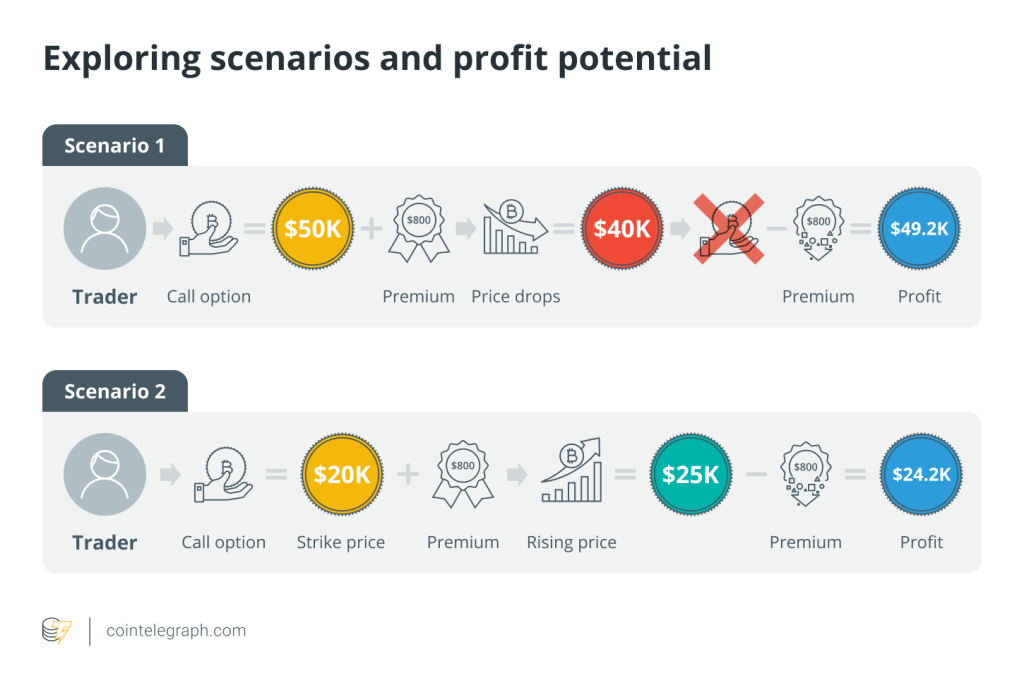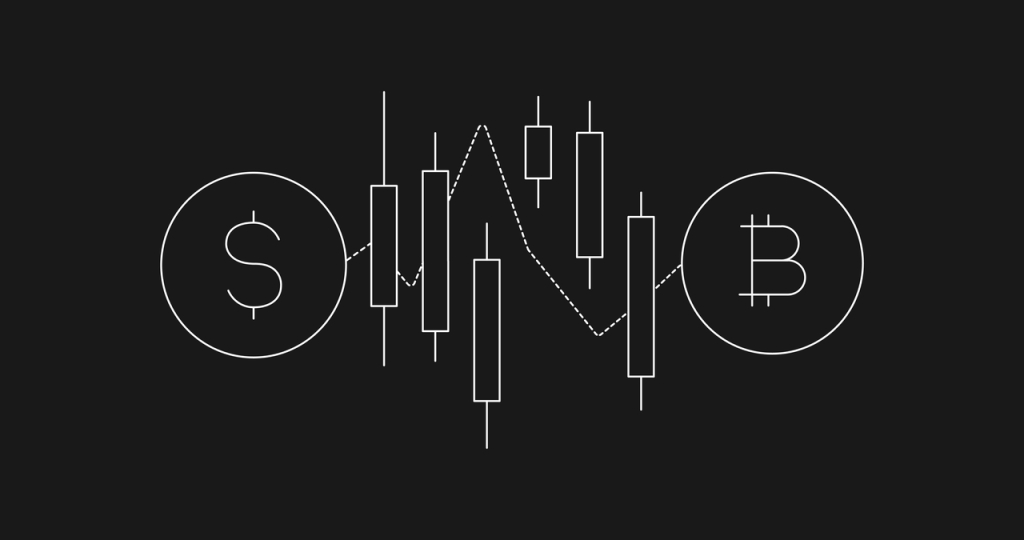Delta neutral options strategies: how to hedge a crypto portfolio


If you're familiar with long-term crypto trading, chances are you'll likely encounter instances when an ongoing catalyst causes huge portfolio volatility for your crypto holdings. While this might be acceptable for crypto traders who are more risk-tolerant, it can sometimes lead to dire situations like margin calls because of how volatility can propel a portfolio into liquidation.
That's why it's often advisable for crypto traders to mitigate their risk and consider taking up hedges to minimize the risk of liquidation. With hedging techniques like delta neutral options strategies, you can limit your risk exposure.
Curious to know how such hedging techniques work? Read on as we cover how advanced crypto traders apply delta neutral to take their trading to the next level.
Learn more
What is delta?
Represented by the symbol Δ, delta is a metric that measures the change in the price of an option's value, given a $1 change in its underlying asset. Delta often ranges from zero to one and can either be positive or negative depending on the option contract being a call or put.
How to calculate the delta of an option
The calculation of delta is typically based on the Black-Scholes model. Its numeric value can be derived by dividing the change in the value of the option by the change in the value of its underlying asset. See below for a representation of delta.
Now we understand the concept of delta as one of the option Greeks, let's put that knowledge into context with an example of BTC call and put options. For starters, an option's delta will always range from zero to one since options are derivatives of their underlying asset, while the underlying asset itself will have a delta of one.
If the premium of the BTC call option increases by $70 when BTC's price increases by $100, the call option's delta is 0.7. Conversely, for put options, its delta will be -0.2 if the BTC put option's premium decreases by $20 when BTC's price rises by $100.
Hedging with delta neutral options strategies
One of the key reasons delta is so popular among crypto options traders is that it allows traders to effortlessly determine the hedging ratio required to maintain a zero delta portfolio. Let's look now at a delta-neutral portfolio and how it manages to mitigate the risk of underlying price movement.
Suppose you own 1 BTC. You're positive about the long-term price of BTC going up, but you're currently unsure about BTC's price movement after the upcoming Bitcoin halving event. To hedge against this portfolio with a current delta of 1, you can choose to buy 25 put options with delta of -0.4. This gives an overall portfolio delta of 0 since the negative delta from the purchased BTC put options is neutralized by the positive delta of the BTC you own.
The trouble with maintaining a delta neutral crypto portfolio
It's crucial to keep in mind that the 25 BTC put options might not work as a hedge in the long-run. Due to factors like changing implied volatility and theta decay, the hedge set up against the 1 BTC holding will likely become imperfect over time. Additionally, options have dynamic deltas that constantly fluctuate because of gamma. Gamma measures the rate of change of an option's delta per $1 change in the underlying asset.
It's ultimately this complexity that forces crypto option traders to keep an eye on their positions in the long run. As delta neutral options strategies will only be effective in the short-term against upcoming catalysts, constant tweaks and changes are necessary for a portfolio to be delta neutral in the long haul.
Writing delta neutral options strategies
Building off our point on implied volatility and theta decay, delta neutral options strategies are also popular among options sellers who write contracts and benefit off them expiring out-of-the-money (OTM). One example of such a delta neutral option strategy would be a short strangle.
Delta neutral BTC short strangle example
Let's look at an example of a BTC short strangle that's delta neutral and how a crypto options trader can generate gains when selling bidirectional options. We'll assume that BTC's last traded price is $37,000 and that the options we're dealing with have expiry dates of December 29, 2023.
Before we execute the BTC short strangle, we'll have to consider call and put contracts with similar delta values. Given Bitcoin's current bullish momentum, calls will likely command a higher premium than puts. To give ourselves a margin of safety, we may consider a short strangle options strategy with call and put options that have a delta of about 0.3. In the context of options expiring on December 29, 2023, this will give us our short strangle strike prices of $36,000 and $41,000.
To execute this trade, crypto options traders will look to sell the $36,000 BTC put contract and the $41,000 call contract. This will create a delta neutral options strategy as the 0.35 delta from the call contract is offset by the -0.35 delta from the put contract. By writing these call and put options and executing the options trade, you'll receive about 0.0797 BTC in credited option premiums.
For this strategy to reap maximum gains, Bitcoin will have to trade between the range of $36,000 to $41,000 and not exceed these strike prices by the option's expiry date. Ideally, Bitcoin would continue to trade in between this range, which will cause implied volatility of the options to fall and the OTM options to eventually expire worthless.
The final word and next steps
From portfolio hedging to writing contracts, we hope our guide to delta neutral options strategies has proven useful. Delta neutral options strategies ultimately allow you to hedge against upcoming catalysts without the need to dump your holdings. With a keen understanding of how crypto options work, traders might even be able to earn additional option premiums by writing contracts for any impending volatility.
Interested to give crypto options trading a try? Check out our BTC options and make the most informed decision today with our price-adjusted delta values.
Learn more






… [Trackback]
[…] Find More on that Topic: x.superex.com/academys/trading/1659/ […]
… [Trackback]
[…] There you will find 32066 additional Information to that Topic: x.superex.com/academys/trading/1659/ […]
… [Trackback]
[…] Find More on that Topic: x.superex.com/academys/trading/1659/ […]
… [Trackback]
[…] Info to that Topic: x.superex.com/academys/trading/1659/ […]
… [Trackback]
[…] Find More here on that Topic: x.superex.com/academys/trading/1659/ […]
… [Trackback]
[…] Find More to that Topic: x.superex.com/academys/trading/1659/ […]
… [Trackback]
[…] Read More on on that Topic: x.superex.com/academys/trading/1659/ […]
… [Trackback]
[…] Find More to that Topic: x.superex.com/academys/trading/1659/ […]
… [Trackback]
[…] Find More to that Topic: x.superex.com/academys/trading/1659/ […]
… [Trackback]
[…] Read More Information here to that Topic: x.superex.com/academys/trading/1659/ […]
… [Trackback]
[…] Here you can find 3755 more Information on that Topic: x.superex.com/academys/trading/1659/ […]
… [Trackback]
[…] Read More Info here to that Topic: x.superex.com/academys/trading/1659/ […]
… [Trackback]
[…] Read More Info here on that Topic: x.superex.com/academys/trading/1659/ […]
… [Trackback]
[…] Info to that Topic: x.superex.com/academys/trading/1659/ […]